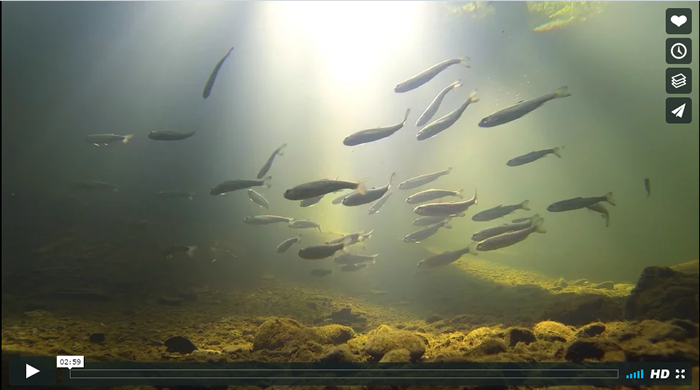Wildlife Habitat
Off-Channel Winter Refugia Habitat Enhancement for Salmonids

The construction of winter off-channel habitat refugia for juvenile salmonids provides the structurally complex habitat needed by juvenile salmon to survive and thrive during winter high flows–called “refugia”—habitat that once was provided by seasonally inundated, floodplain wetlands. Side channels and wetland complexes are constructed to connect the floodplain at lower (safer) flows; this off-channel habitat provides winter rearing and high flow refugia habitat for juvenile salmonids that would otherwise be swept away in high flows.
See the companion video to the
Thomas Creek Ranch habitat enhancement project here.
An example can be seen at Thomas Creek Ranch in the Green Valley Creek Watershed. Below is an article that was written about the project and published in Gold Ridge RCD's 2015 annual newsletter, "Stewards of the Land."
"The Green Valley Creek Off Channel Winter Refugia Habitat Enhancement Project, which was constructed in October 2014, is entering the second season of biological and physical monitoring. The Project, completed by Gold Ridge RCD in collaboration with the Thomas Creek Ranch Homeowners Association, Prunuske Chatham, Inc., Petersen Construction Services and University of California Cooperative Extension/Sea Grant Program, and funded by the NOAA Community Restoration Center and California Department of Fish and Wildlife, involved the construction of a side channel and wetland complex that connects the floodplain at lower flows and provides winter rearing and high flow refugia habitat for juvenile salmonids. Upon maturity, the project will provide the structurally complex habitat needed by juvenile salmon to survive and thrive during winter high flows – habitat once provided by seasonally inundated, floodplain wetlands.
Here’s what we’ve learned from the monitoring so far. Physically, the channel performed well under the extremely high flows delivered during December 2014. The project provided the flow refugia as designed, even as Green Valley Creek spilled onto the historic floodplain and coursed through the field adjacent to the constructed channel. Despite some dramatic flows in December 2014, the first year of biological fish monitoring, peformed in 2014-15, occurred under drought conditions, which did not create many opportunities for the high flow conditions the project was designed to function under. According the UCCE Seagrant monitoring program, under the drought conditions in this first post-implementation year, overwintering juvenile coho salmon appear to rely on rearing habitat upstream of the project site since most fish are not detected moving through until after winter base flows reside, in April and May. The UCCE Seagrant annual monitoring report states, “The Green Valley Creek Winter Refugia Enhancement Project did reduce winter stream flows in the project reach by providing additional habitat to dissipate large winter storm flow conditions. Although very few overwintering coho were detected in the newly-created off-channel during the winter of 2014-2015, this is primarily explained by the fact that there were rarely flow conditions high enough to wet the off-channel enhancement.”
Two consecutive watershed planning efforts have been conducted in recent years to identify and propose a prioritized plan of action to address limiting factors to coho salmon survival in the Green Valley Watershed. This project was identified as a top priority and was designed to address the lack of winter rearing habitat in the Green Valley Creek Watershed, particularly in the lower six miles of the stream. Green Valley Creek is one of only five remaining streams in the Russian River drainage where wild juvenile coho are known to exist. Green Valley Creek has been impacted by many activities during the last century that have led to degradation of the stream habitat. Currently, the main type of habitat in the lower reach of the watershed is flatwater habitat. The off channel habitat or backwater pools created by this project will provide a velocity refuge for coho salmon in the winter. While the high flow conditions did not coincide with juvenile coho migration in 2014-15, several adult coho migrating into Green Valley Creek to spawn utilized the created channel on their journey upstream. With the higher rainfall amounts expected this winter, we will be watching to see how the coho and other aquatic wildlife use the created habitat.
Fisheries monitoring to evaluate the project is an extension of a long‐term coho monitoring effort conducted by the UC Cooperative Extension in the Russian River, designed to evaluate the effectiveness of the Russian River Coho Salmon Captive Broodstock Program (RRCSCBP). A stationary PIT tag detection system with multiple antenna located throughout the project reach in Green Valley Creek and the constructed channel is being used to estimate the number of smolts leaving, adults returning, migration timing, and differences in survival among release groups. The monitoring infrastructure that is currently in place provides a unique foundation for evaluating the effects of the proposed habitat enhancement project on coho populations in Green Valley Creek."
